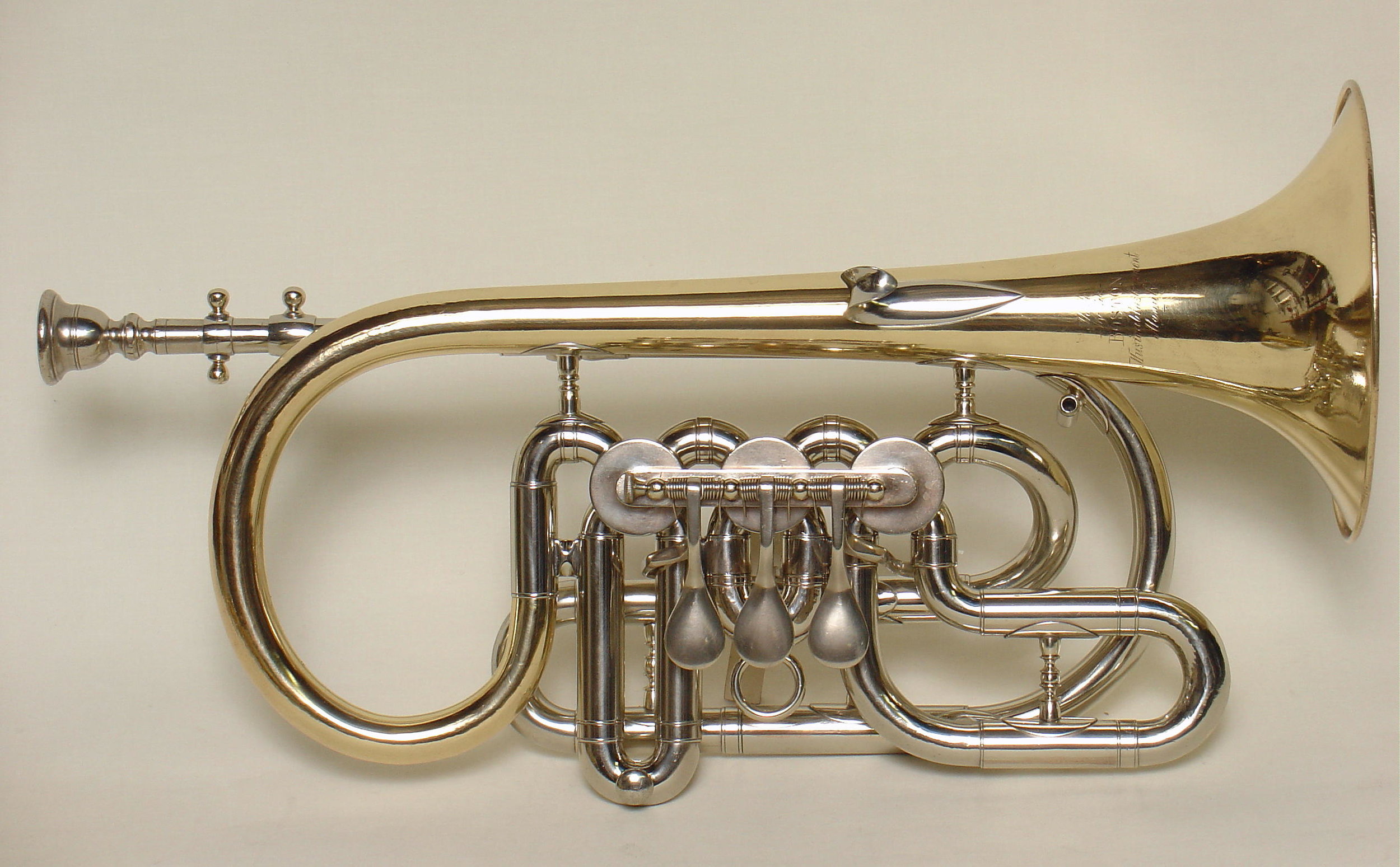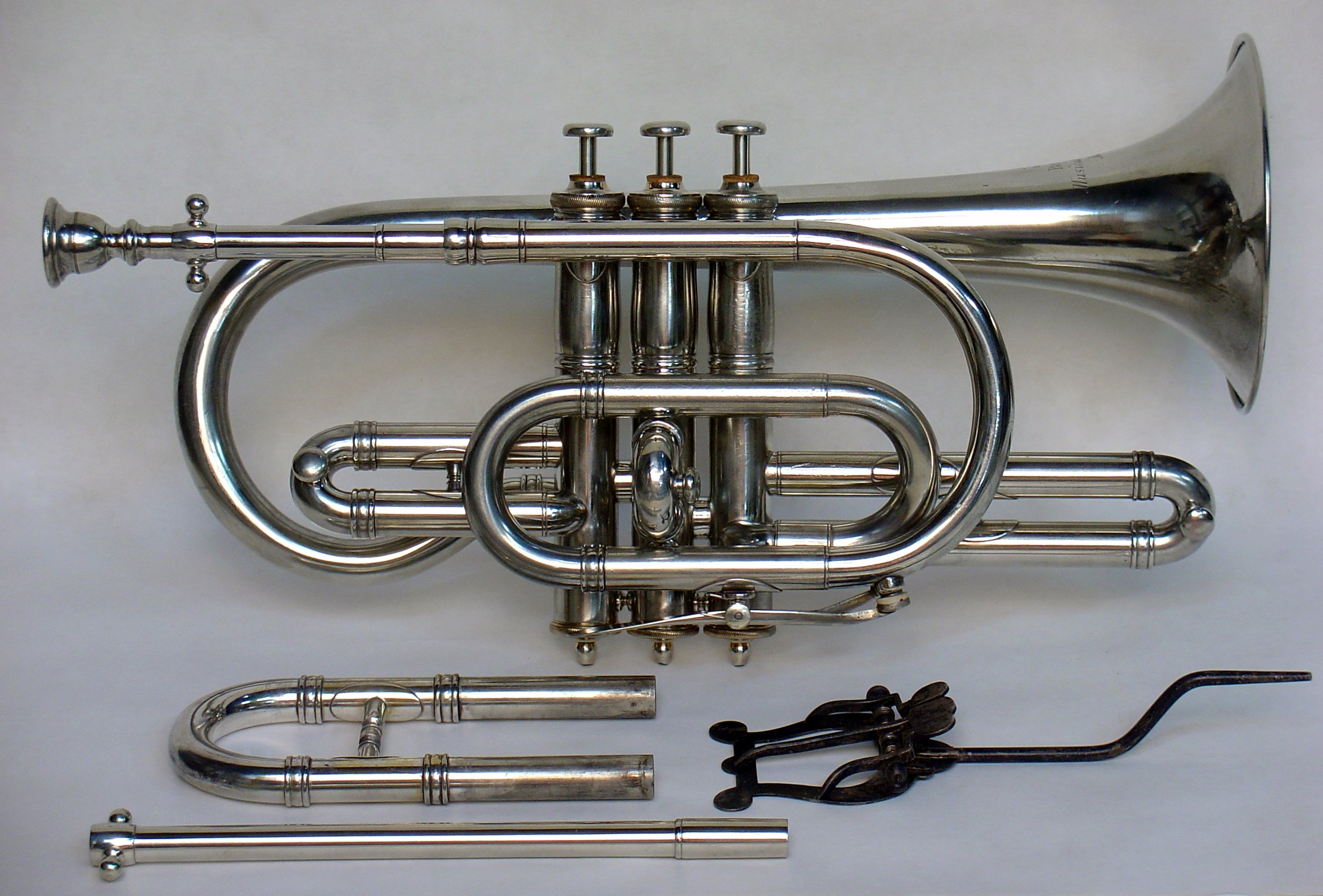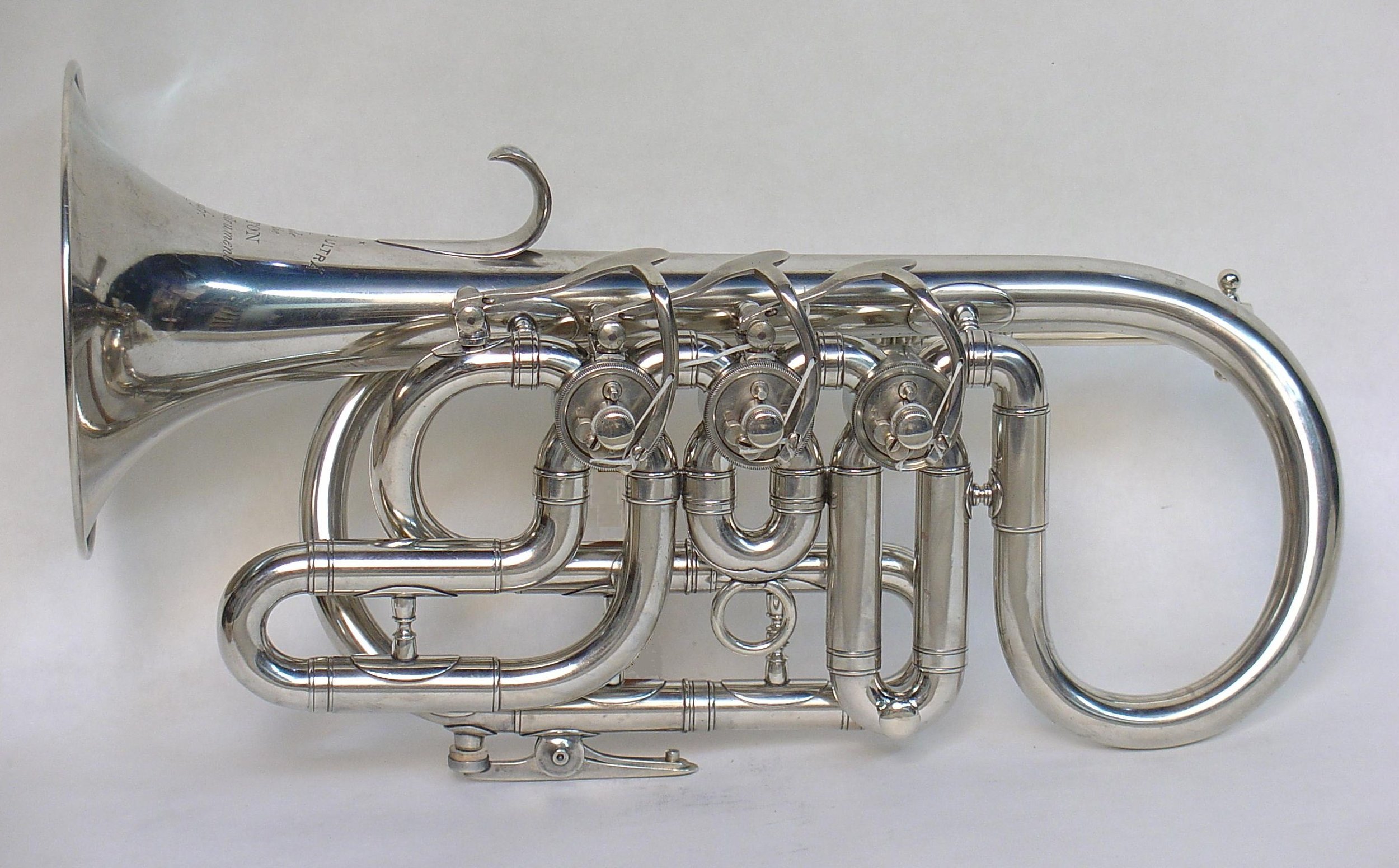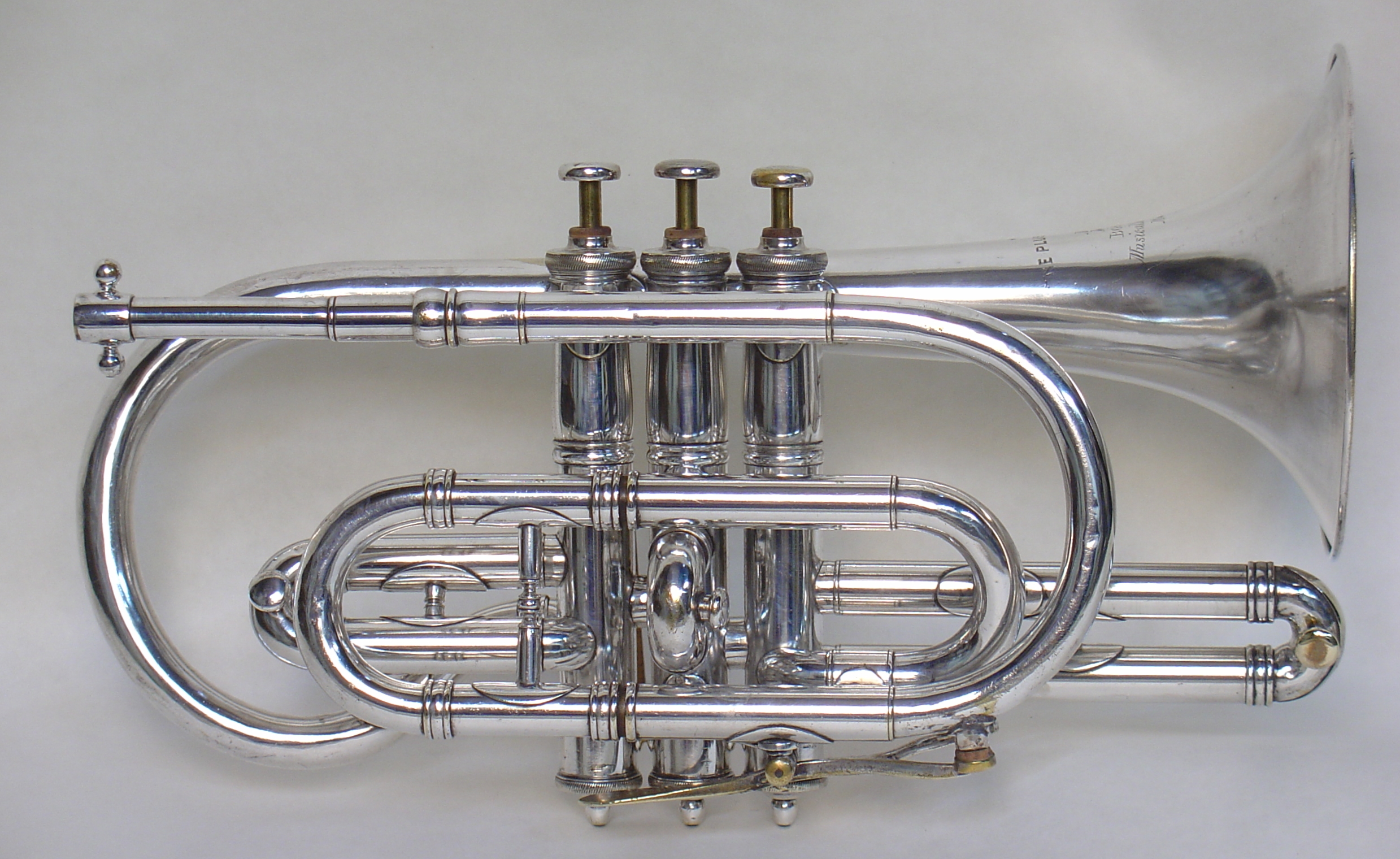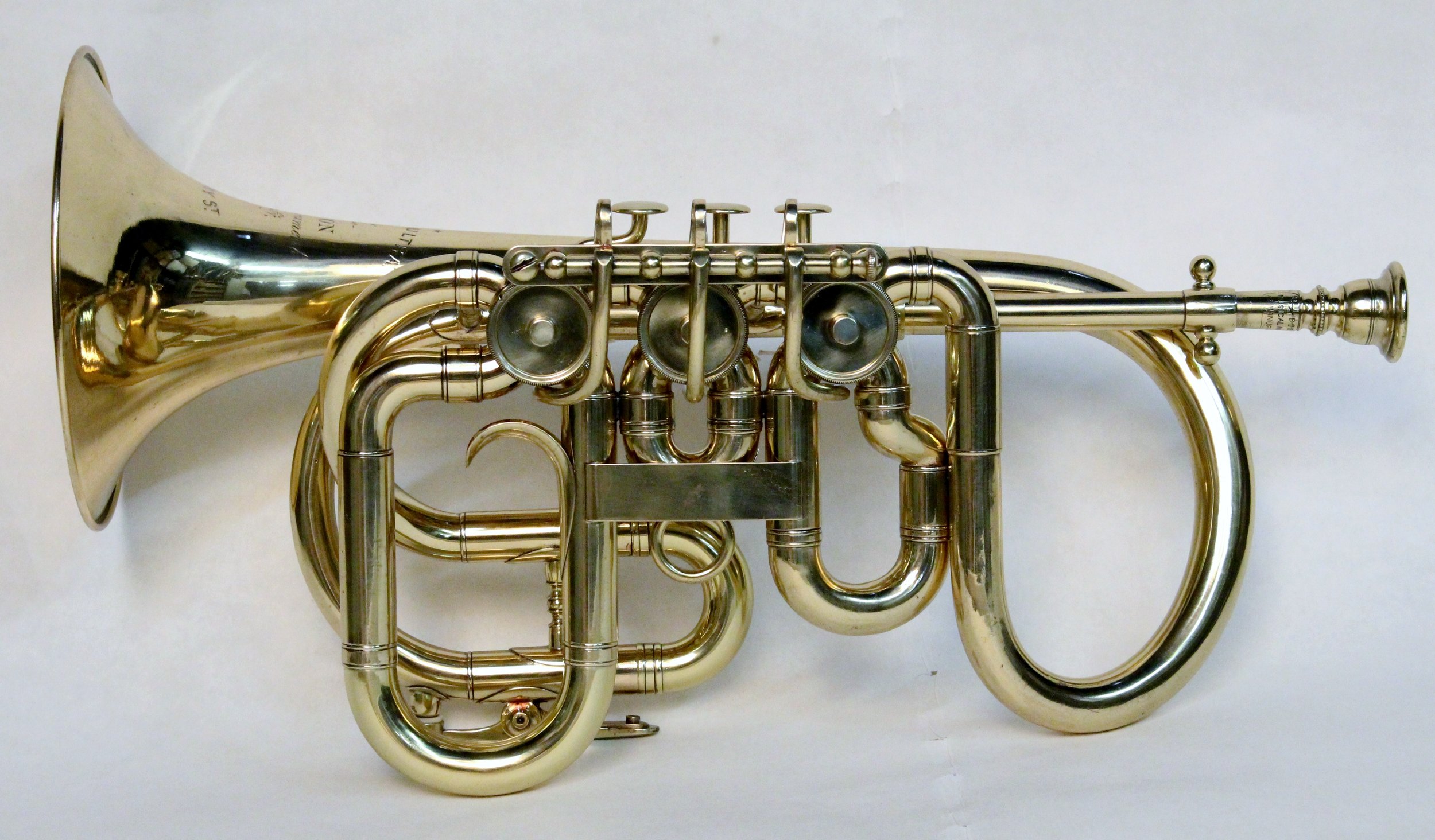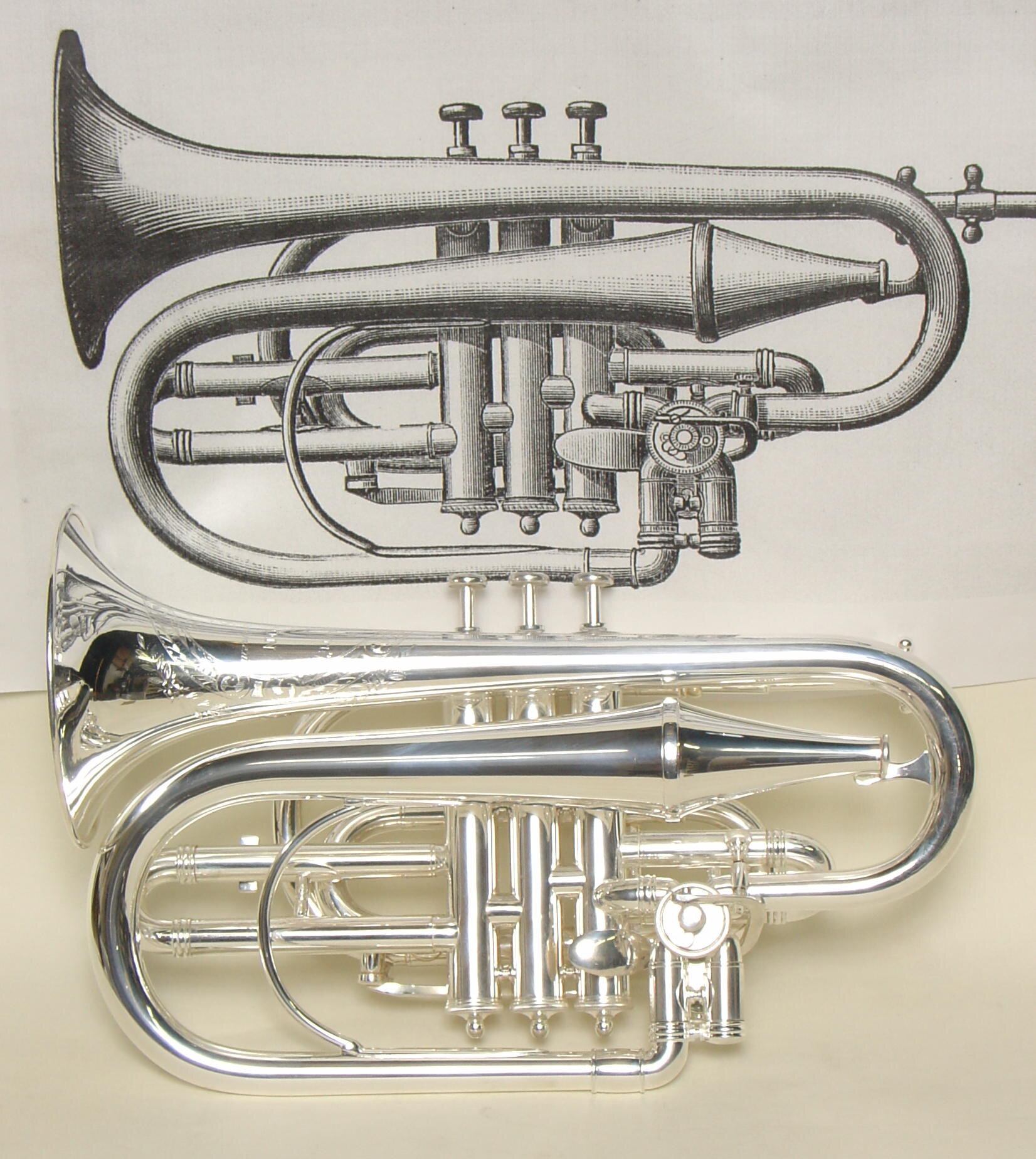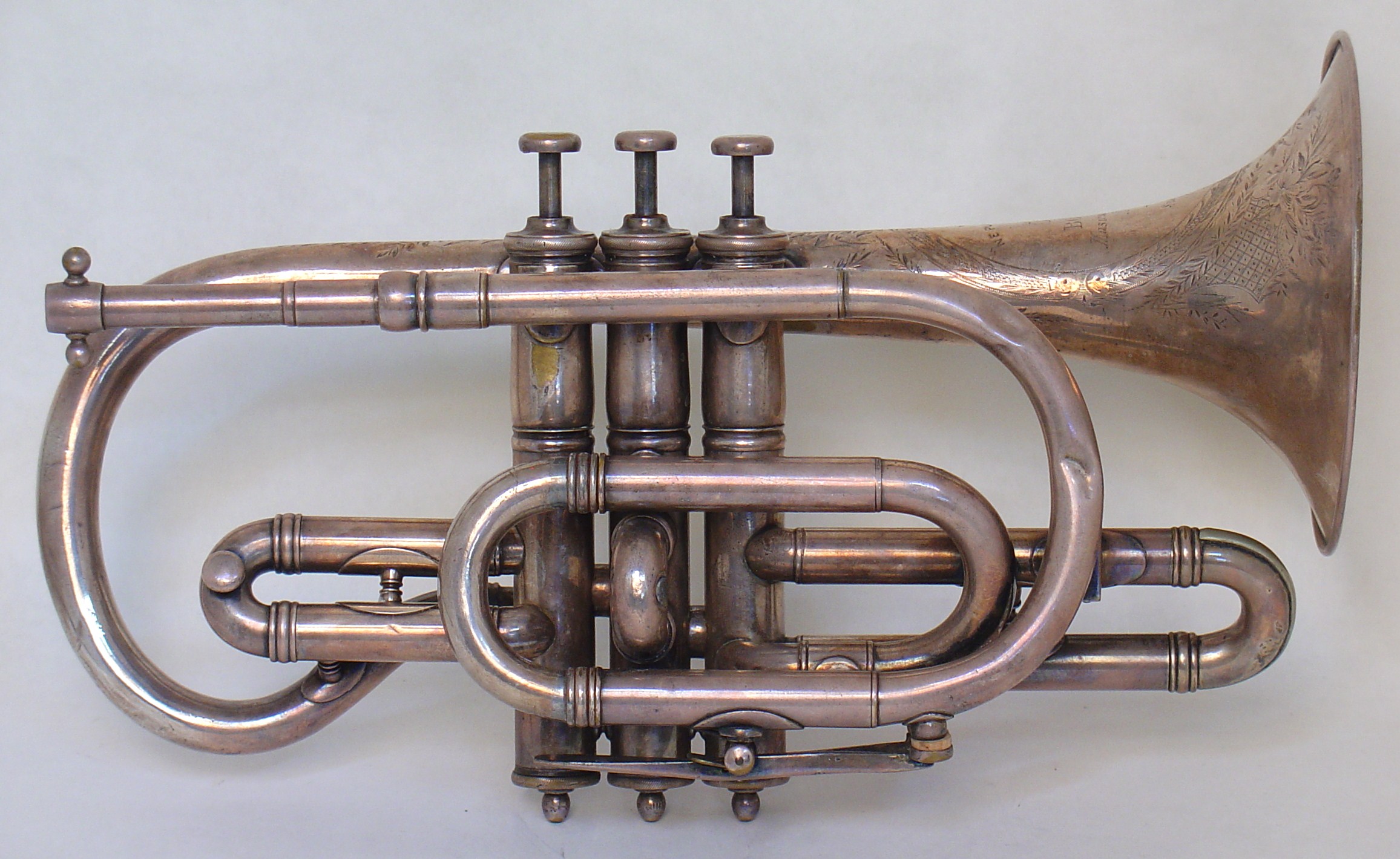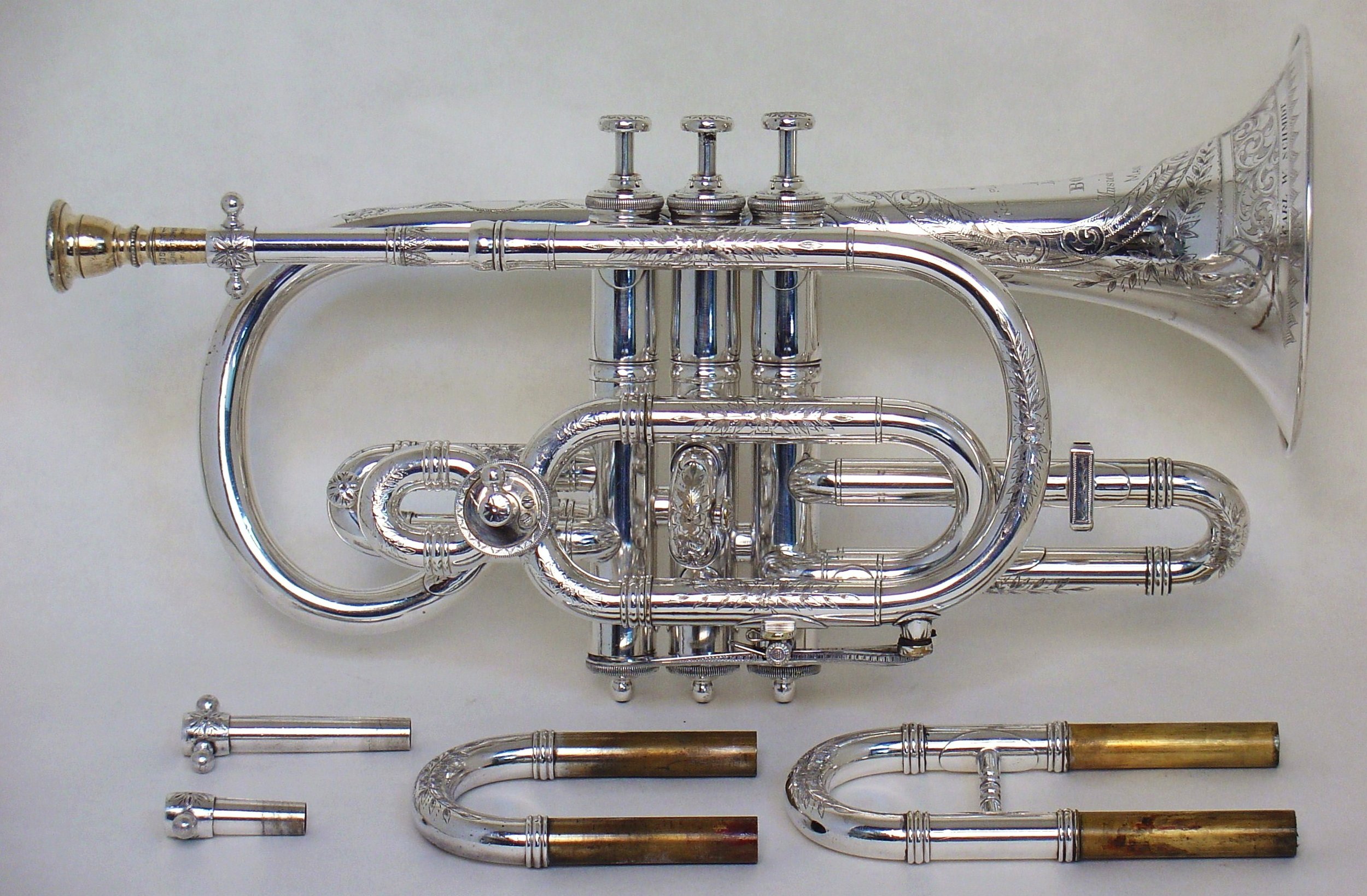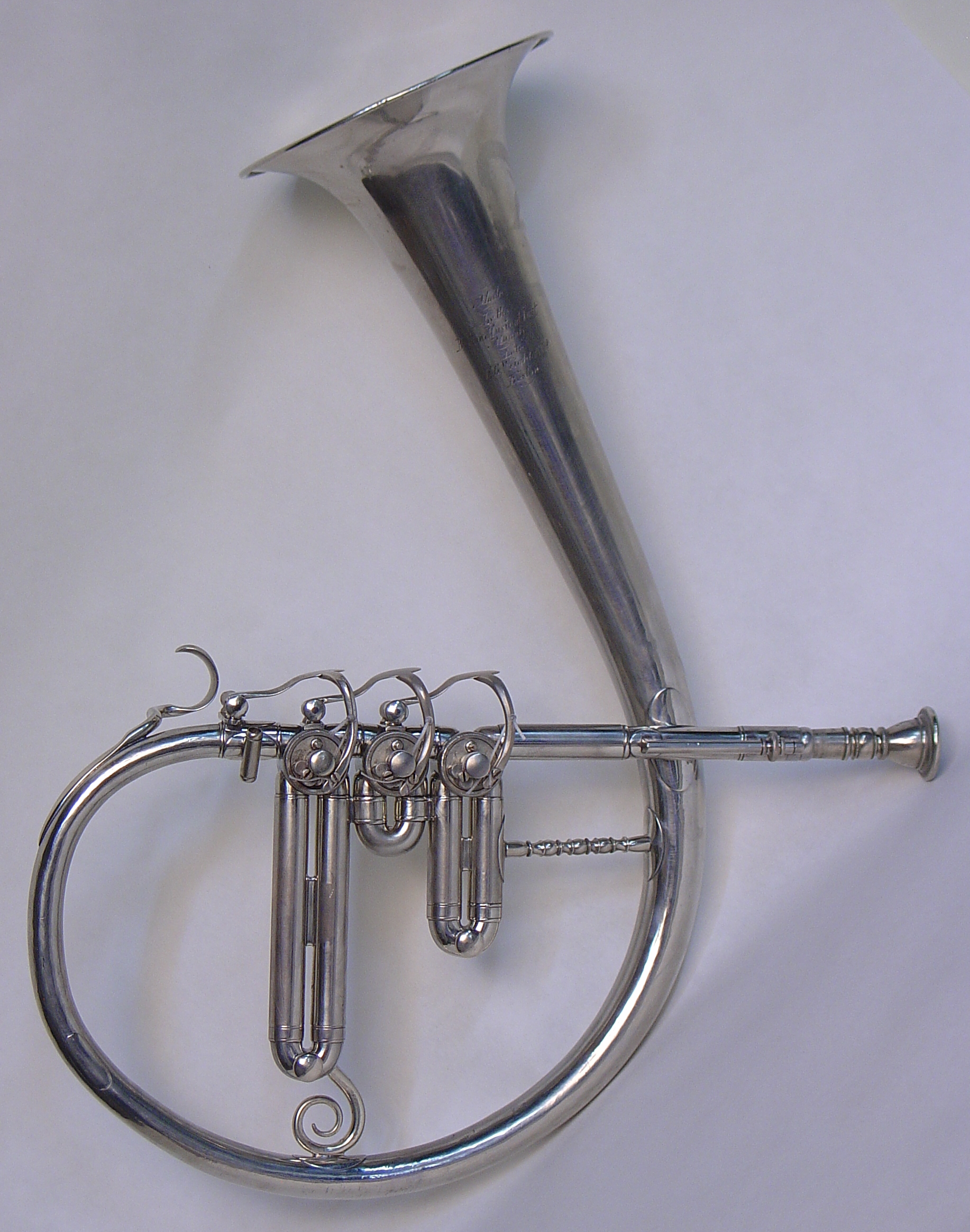Cornets and Trumpets by Boston Musical Instrument Manufactory
By the time that The Boston Musical Instrument Manufactory was formed in 1869, Boston had been the center of the US brass instrument industry for at least 20 years. The new company of makers was a merging of the E.G. Wright and Graves & Co. shops which had already had a close working relationship for almost two decades. Most of the experienced workers were from German musical instrument making families, the most important being Henry Esbach and Louis Hartmann who became majority owners of the business.
It was only about three years previous to the formation of the new business that Wright started producing a piston valve version of his very popular rotary valve Bb cornet. These had the same .463" bore measurement and the bell and mouthpipe appear the same at first. Careful measurements of the bells indicate that while the dimensions are very close, they were made on two different bell mandrels. Judging by the extreme rarity of these today, they must not have been nearly as popular as the rotary valve cornets made in the same few years.
The rotary valve version was continued in production for many years after the formation of Boston MIM, although the piston valve was soon redesigned. Sometime around 1875, a similar but newly designed cornet was introduced with a new, larger bell and bore measuring about .487". There are seven of these known to exist, described on my "Pre-Star” and One Star Cornet page. Two of these have the earliest appearance of the engraved legend: "Ne Plus Ultra" (Latin for "no more beyond" or "none better") but without any stars. Two have the appearance of the Orchestra Model rotary valve cornet with side action levers (one with a Star and the other without) with the larger bore and bell. Two others with rotary valves (both with One Star) have the distinct, wide first and third slide crooks seen on the later Esbach patent cornet but with top action levers as on some of the earlier instruments. The three others (two with no star and one with) have piston valves.
The next model introduced has the same large bore and is engraved with Two Stars and "Ne Plus Ultra". It had a bell that was smaller through the taper, but with similar flare. Like the earlier models, it was available with piston valves or rotary valves with either top or side action levers.
By early 1879, the Three Star Cornet was introduced and the rotary valve version was available in the old form with side action valve levers or with Henry Esbach's patented valve mechanism. See my page on these for more information on the earliest Three Star Cornets. The "One Star" doesn't appear in any of the catalogs or advertisements that I have seen and appears to have been superseded by the two newer designs. That bell design seems to be the only Bb cornet bell produced by Boston that deviates much from the Courtois prototype. As in the earlier Boston cornets, the bell design for the Three Star Model cornet was a very close copy of the Courtois cornets and the Two Star bell was slightly larger through the flare.
It’s also interesting to take note that the decade of cornet design evolution described above also involved increases in weight. E.G. Wright’s Bb cornets weight about 20 ounces and early examples by Boston, 26 ounces, an increase of about 28%. A 4 valve cornet by Wright weighs 24 ounces compared to the Boston Three Star with four rotary valves at 33 ounces, or a 35% increase. Some of the weight was in the larger valve diameters, but the thickness of the bell metal was also increases. Similar increases in weight are found in the piston valve instruments as well. Three Star cornets made after the 1900 were heavier yet.
By the time that the 1881 catalog was issued, the Three Star was illustrated in the form that is so familiar to us. The valve section for these new models was redesigned from the earlier piston valve cornets with wider slide crooks and, of course, the larger bore. Capitalizing on the Two and Three Star trademarks, Boston also sold some of the smaller bore (about .463") cornets with piston valves as well as some in the Esbach patent configuration, the latter being pitched primarily in C. All of the known examples were made before the early 1880s. Interestingly, these smaller cornets utilize the smaller bells that were designed for the C cornets, rather than the earlier bell that continued to be used on the rotary valve cornets.
Several years after its introduction, the "Famous Three Star Cornet" was redesigned with a smaller, intermediate bore (.475") but was otherwise the same as the large bore version. At about the same time, the fixed valve guide was replaced by a three point, floating guide, copied from those in Courtois and Distin cornets. This appears to apply to all piston valve cornet models at the same time (probably after 1883, around serial number 8000).
The 1887 catalog offers only piston valve versions of the Two and Three Star cornets, and while listing the Esbach patent model, fails to describe it as a Three Star model or mention that it can be also made in the key of C. The Esbach model was not listed in a catalog from about 1890 and the Two Star disappeared by 1903. The older rotary valve cornets continued in production longer. Five different rotary valve cornets, each with either side or top action levers, were still offered after 1903 and the 1915 catalog still offered rotary valve Eb cornets. The Three Star Cornet with piston valves continued in production in its second form (with the .475" bore) until at least 1915, at which time it was lengthened to 13 1/2" and modified with a fixed mouthpipe, single waterkey and A tuning slide pull. Around the same time a companion long model cornet (16" long) without shepherd's crook bell was added to the line.
After the deaths of the original partners and sale of the company to Cundy-Bettony, all of the original models of Boston instruments started to disappear and were superseded by instruments made elsewhere. During this time, the bought in trumpets started to be stamped with three stars and continued to be available into the late 1920s or later. At least some of these were made in Paris by Couesnon, but I haven’t been able to identify the maker(s) of others. A new serial number series was started some time in the 1920s, which has led some collectors to believe that they have a very early Boston trumpet, but I know of only one example made before 1915. Please let me know if you think that you have another!
A two part history of The Boston Musical Instrument Manufactory, by Robert Eliason, myself and Dick Martz, has been published in Volumes 41 and 42 of the Journal of the American Musical Instrument Society. If you have any additional historical information regarding cornets and other instruments by Boston, please contact me. I will continue to improve the accuracy of this story as I learn more.
Click on an image below for the story.

